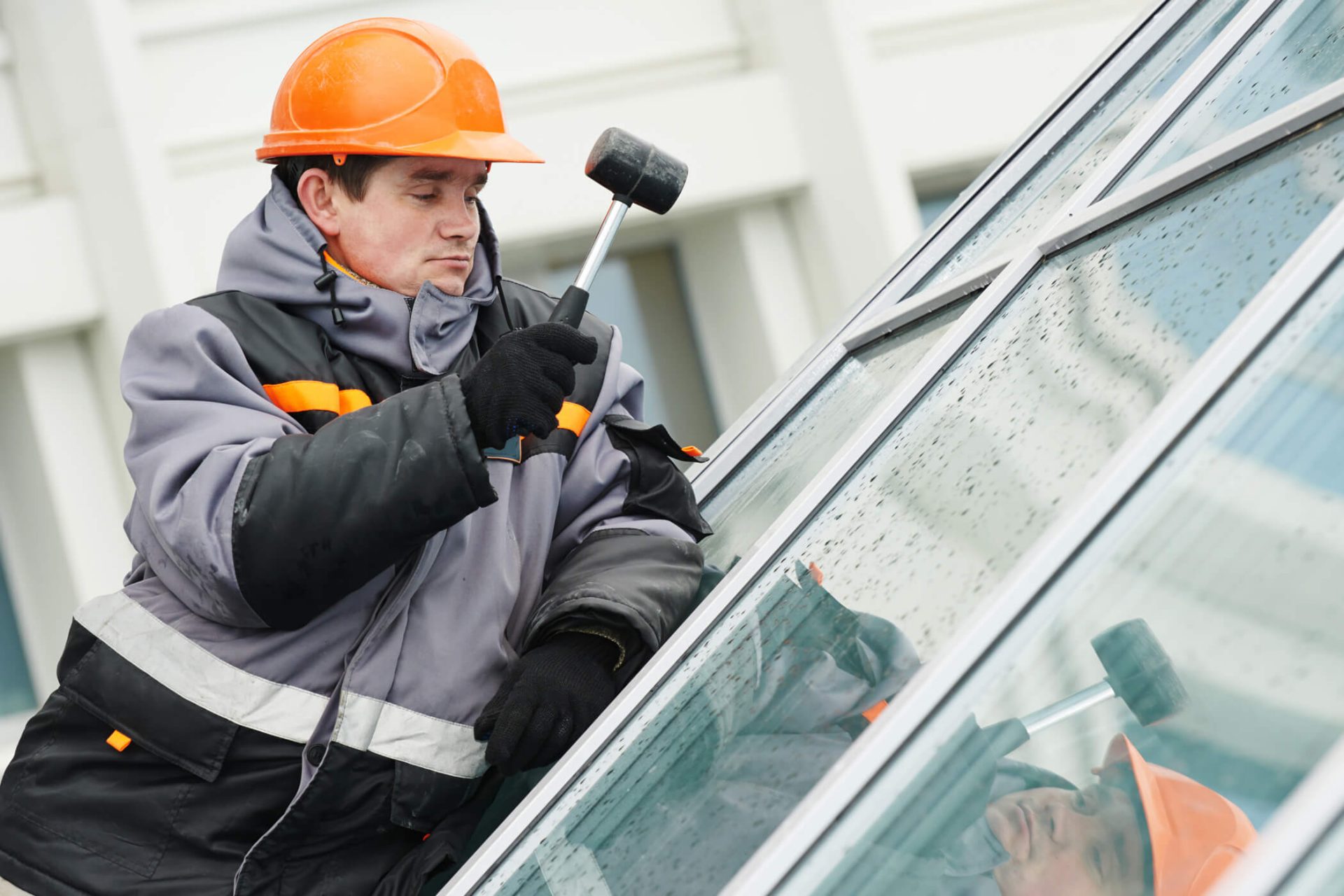Most Common Injuries Glaziers Sustain on NYC Construction Sites

New York is among the five states that currently employ the most glaziers in the construction industry. It ranks fourth, right behind California, Texas and Florida – and just ahead of Washington. Although we often notice the many handsome and protective windows that glaziers install in skyscrapers, few of us are aware of the many professional skills they must master before being qualified to ply their physically demanding trade.
Besides mounting windows, glaziers are also often asked to design and build skylights, glass doors and indoor paneling. During their apprenticeships, they must learn to read basic building blueprints and handle various hand and power tools, depending on the tasks at hand. On any given day, glaziers may need to use glasscutters, suction cups, glazing knives – or power tools like drills, grinders, cutters and saws.
Although many glaziers work indoors preparing glass for use in building projects, others must brave the outdoor elements while mounting glass panels. All these tasks put them at great risk for serious and even sometimes fatal accidents.
Here’s a closer look at the many injuries that glaziers can incur. This information is followed by a list of key safety measures that can help protect them on the job.
Injuries that glaziers must guard against each day
- Serious cuts, lacerations, abrasions and puncture wounds. During their training, glaziers are taught how to carefully cut pieces of glass – and such glass substitutes as plastics, marble and granite. They must also measure and cut the materials used to laminate most glass products. When they’re cutting and placing these materials into frames (or sashes) – and later moving them, it’s easy to suffer deep cuts and lacerations;
- Neck, back, shoulder and arm muscle soreness and injuries. Since glaziers must regularly bend over and cut materials – and fit glass and other substances into frames — they often experience great soreness in their bodies. Although rigging and various machines can help with lifting the larger sheets of glass and glass substitutes, individual workers must still often rely on their own strength when handling key tasks;
- Slips, trips and falls. Like other construction site workers, glaziers can slip or trip over debris left in their work area – or fall when working outdoors on wet surfaces. Their work on ladders and scaffolding also makes them prone to serious falls that can result in fractured bones – or spinal cord and traumatic brain injuries;
- Respiratory issues. Glaziers must often use very strong (and sometimes toxic) solvents found in caulking, sealants, adhesives and glass-cleaning products. When removing or installing glass in older buildings under renovation, they can also be exposed to asbestos hidden in older floor tiles, paint and various forms of insulation;
- Eye injuries. Daily tasks often involve cutting, grinding and drilling glass – activities that often send harmful dust and other particles into the air around the workers. And should glaziers fail to always wear goggles, large shards of glass and other objects can fly into their eyes, permanently damaging their vision;
- Skin rashes. Many of the substances referenced above under “respiratory issues” can also cause glaziers to suffer hives, dermatitis and other skin allergies.
Safety tips to help better protect all glassworkers
- Proper clothing and safety gear are crucial. Supervisors should never allow glaziers to begin work unless they’re wearing proper gloves (or gauntlets), hard hats, work boots and safety goggles. Thick coveralls or work aprons are often best to protect workers from flying particles. Other gear may include kneepads, wrist guards and long-sleeved shirts;
- All power tools must be regularly checked and turned in for repairs as soon as they start malfunctioning;
- Only limited work should be handled in confined spaces. Toxic fumes and flying particles make it necessary to create larger work spaces for glaziers;
- Fully stocked first-aid kits must always be kept nearby. Serious cuts and lacerations must be treated immediately, even while arranging transport to local emergency rooms;
- A comprehensive safety training program must be provided before work begins. Like all other construction workers, glaziers must be reminded of the best ergonomic ways to lift heavy glass and other objects — and how to properly operate all their work tools;
- Only the least toxic glass polishing cleaners, caulking materials, glues and adhesives should ever be ordered for glaziers;
- Respirators may often be required. Inhaling harmful dust and particles is just too risky;
- Damaging fatigue should be prevented. This can be achieved by rotating specific work duties throughout the day. Also, workers must guard against repetitive stress injuries by changing their precise grip, hand motions and body positioning during each work shift.
If you’ve suffered a serious injury while working on a New York City construction site, you should immediately contact our New York City construction accident law firm. We’ve been handling important cases like yours for many years and will carefully investigate every part of your case. We’ll fight hard to win the maximum compensation available for all your lost wages, medical expenses, pain and suffering and other losses.



